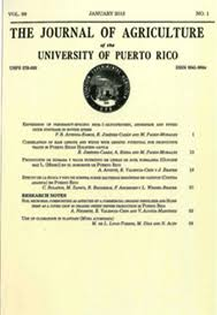Resumen
Antes de la llegada de los conquistadores españoles, en el Nuevo Mundo no existían los bovinos domésticos. No fue hasta el 1493 que se introdujo por primera vez ganado proveniente de España a este territorio. Tras su adaptación y subsecuente reproducción mayormente por selección natural durante varios siglos, de este ganado ibérico se desarrolló nuestro ganado Criollo. Estos animales, de pequeño tamaño corporal, pelaje corto y alta adaptabilidad al trópico, formaron la base de nuestra ganadería durante cuatro siglos de gobierno español y durante los primeros 50 años de soberanía estadounidense. Durante este tiempo, el ganado Criollo aportó de modo notable al sustento, economía, cultura y política de nuestro pueblo. Principalmente a partir de la década del 1950, a través de programas de inseminación y de importación de ganado vivo, se introdujo a Puerto Rico (PR) genética mejorada para la producción de leche (i.e., Holstein), teniendo como base a nuestras vacas Criollas. Tras décadas de cruzamientos absorbentes, se ha alcanzado el fenotipo de las razas europeas mejoradas, pero manteniendo ciertas características de adaptación al medio ambiente tropical en una porción del ganado. Entre estas características se destacan un pelaje corto y una capacidad termorreguladora superior, las cuales no se encuentran en el ganado Bos taurus de clima templado. En esta revisión se pretende unir la evidencia histórica sobre el desarrollo de nuestra ganadería con la información científica reciente asociada al progreso de esta empresa y el alto grado de adaptación que nuestros animales han alcanzado ante las condiciones ambientales imperantes.

